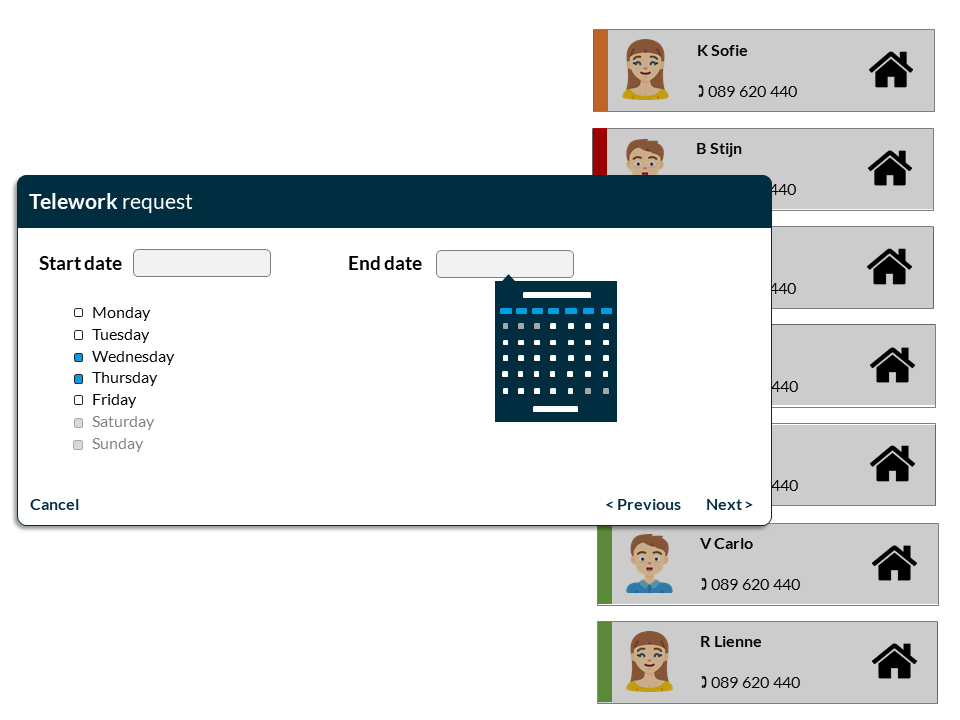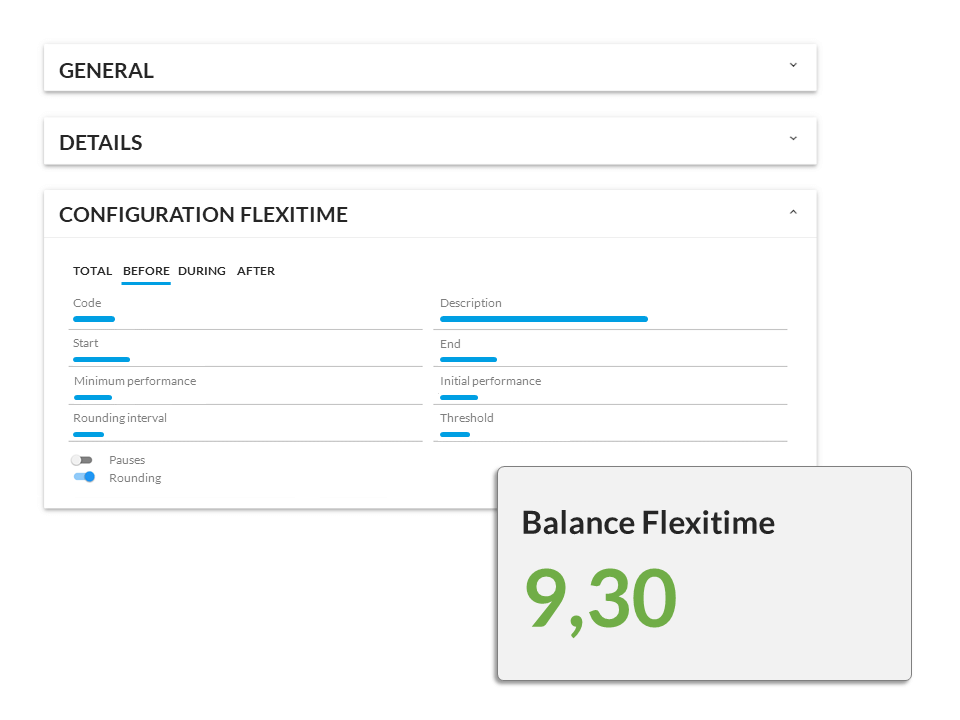Make it possible for your personnel to work flexibly
Optimise the work-life balance of your employees by allowing them to work flexibly / hybridly
A first form of flexible working is teleworking or working from home. Because of the variation with working at the office, this form of flexibility is also called hybrid working. You give your employees the opportunity to work from home one or more days a week. Of course, this can easily be facilitated with our time & attendance solution.
For example, there is an ‘application form’ for working from home. And your employees can easily register their workingtime from home via computer, tablet or smartphone. For correct remuneration, we separate the teleworking hours from the office working hours so that adjusted allowances are possible.

By giving your employees flexitime instead of fixed working hours, they can decide for themselves when they start and stop working. Of course, there are limitations to flexitime. An employee has to take into account the mandatory attendance times and the flexitime balance.
In the settings of the time & attendance system, you determine the rules of the flexitime scheme. In addition, our time & attendance software gives you the tools to check whether the rules are respected by your employees.

Thanks to the ‘small flexibility’, flexible work schedules are also an opportunity. As a result, your organisation can cope with peak periods by having your employees work more temporarily. Later in the year, they take that time back by working less.
Your employees know their work schedule well in advance and can therefore adjust their private lives to it. Which is not the case with traditional overtime. Our time & attendance solution takes care of the registration of the working hours and control of the maximum hours worked.
